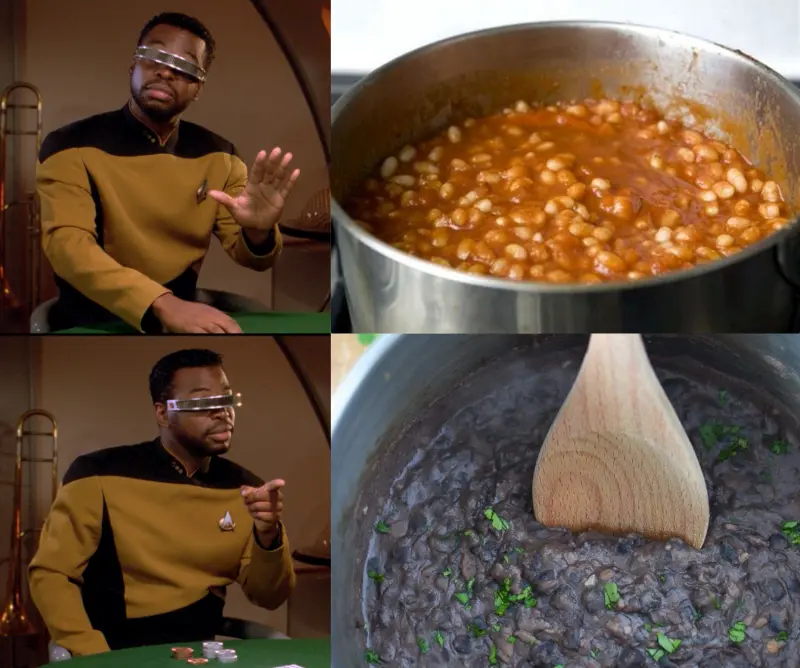Arthur Besse
cultural reviewer and dabbler in stylistic premonitions
- 121 Posts
- 395 Comments

(my contribution to lemmy’s beans arc)
- Arthur Besse@lemmy.mltoMildly Infuriating@lemmy.world•Code sent to gmail while using gmail..!English6·9 days ago
you could use the clipboard to copy the link and open it in another browser
- Arthur Besse@lemmy.mltoTechnology@lemmy.world•How AI slop undermines our understanding of realityEnglish232·9 days ago
big oof.
We can conclude: that photo isn’t AI-generated. You can’t get an AI system to generate photos of an existing location; it’s just not possible given the current state of the art.
the author of this substack is woefully misinformed about the state of technology 🤦
it has, in fact, been possible for several years already for anyone to quickly generate convincing images (not to mention videos) of fictional scenes in real locations with very little effort.
The photograph—which appeared on the Associated Press feed, I think—was simply taken from a higher vantage point.
Wow, it keeps getting worse. They’re going full CSI on this photo, drawing a circle around a building on google street view where they think the photographer might have been, but they aren’t even going to bother to try to confirm their vague memory of having seen AP publishing it? wtf?
Fwiw, I also thought the image looked a little neural network-y (something about the slightly less-straight-than-they-used-to-be lines of some of the vehicles) so i spent a few seconds doing a reverse image search and found this snopes page from which i am convinced that that particular pileup of cars really did happen as it was also photographed by multiple other people.
- Arthur Besse@lemmy.mltopolitics @lemmy.world•No sex. No dating. No marriage. No children. Interest grows in 4B movement to swear off menEnglish197·9 days ago
🥛🤝🦆
(it’s odd that PBS is promoting this, as it is actually a terf movement)
RedHat was a major military contractor with job postings like this current one [archive] long before they were bought by another older and larger military contractor.
https://en.wikipedia.org/wiki/IBM_and_World_War_II
https://web.archive.org/web/20240530005438/https://www.redhat.com/en/resources/israeli-defense-forces-case-study (original is 404 for some reason)
- Arthur Besse@lemmy.mltomemes@lemmy.world•Drop your most "wtf that's not how the world works" from movies/tv shows.English31·18 days ago
Lets Enhance is a pretty great supercut, but nothing beats the original Blade Runner scene.
enhance 224 to 176
enhance, stop
move in, stop
pull out, track right, stop
center and pull back, stop
track 45 right, stop
center and stop
enhance 34 to 36
pan right and pull back, stop
enhance 34 to 46
pull back, wait a minute, go right, stop
enhance 57 to 19
track 45 left, stop
enhance 15 to 23
give me a hardcopy right there
only hobbyists and artisans still use the standalone
carrot.pythat depends onpeeler.in enterprise environments everyone uses the
pymixedveggiespackage (created usingpip freezeof course) which helpfully vendors the latest peeled carrot along with many other things. just unpack it into a clean container and go on your way.
deleted by creator
deleted by creator
deleted by creator
- Arthur Besse@lemmy.mltolinuxmemes@lemmy.world•Handling non-responsive and frozen applicationsEnglish4·18 days ago
The canonical documentation is https://www.kernel.org/doc/Documentation/filesystems/proc.rst (ctrl-f
oom) but if you search a bit you’ll find various guides that might be easier to digest.https://www.baeldung.com/linux/memory-overcommitment-oom-killer looks like an informative recent article on the subject, and reminds me that my knowledge is a bit outdated. (TIL about the choom(1) command which was added to util-linux in 2018 as an alternative to manipulating things in
/procdirectly…)https://dev.to/rrampage/surviving-the-linux-oom-killer-2ki9 from 2018 might also be worth reading.
How to make your adjustments persist for a given desktop application is left as an exercise to the reader :)
- Arthur Besse@lemmy.mltolinuxmemes@lemmy.world•Handling non-responsive and frozen applicationsEnglish31·18 days ago
I’m not sure what this comic is trying to say but in my recent experience a single misbehaving website can still consume all available swap at which point Linux will sometimes completely lock up for many minutes before the out-of-memory killer decides what to kill - and then sometimes it still kills the desktop environment instead of the browser.
(I do know how to use
oom_adj; I’m talking about the default configuration on popular desktop distros.)
404 Media neglected to link to her website, which is https://ada-ada-ada.art/
does your resume include a sokoban clone?
- Arthur Besse@lemmy.mltoWorld News@lemmy.ml•First North Korean troops killed in Russia, says Lithuanian sourceEnglish3·20 days ago
that flag is upside down 🤘

in lemmy-ui (the default lemmy web interface) both ways work. (which client are you using that doesn’t?)